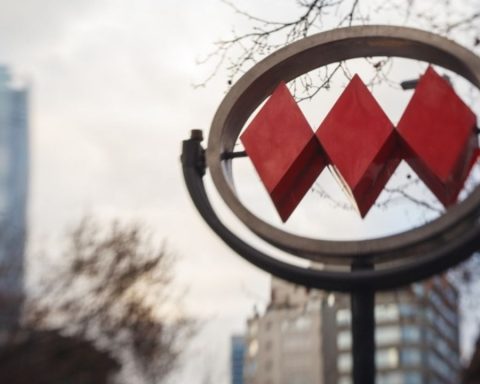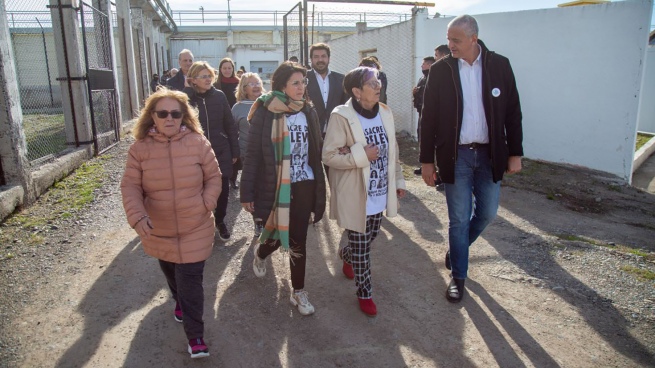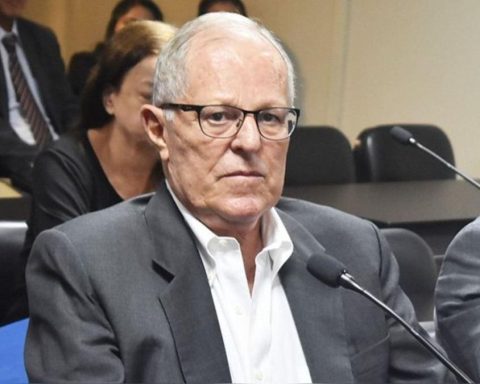New trains, new services and new stations. These were some of the announcements made by President Gabriel Boric, in the context of his recent tour of the O’Higgins, Maule and Ñuble regions. In the instance, the President assured that the Trains for Chile plan – mentioned in his first Public Account, last June – will allow the strengthening of rail transport, modernizing and improving the existing infrastructure, in addition to incorporating new trains to the network. It is a plan that seeks to update and put on the agenda a delay of more than 50 years, in relation to a historical debt with a railway system that allowed connectivity and that was a fundamental part of the construction of the country.
The current government’s strategy aims to ensure that, in the medium term, Chile has the most modern trains in South America, which will reduce travel times, thanks to improvements to the tracks and the implementation of additional services. An announcement that adds to what President Boric called “a cross-sectional and historical desire of our country”, when in his speech at the National Congress, on June 1, he assured that by 2026 the goal is to mobilize 150 million passengers by rail, along with the promise “no more diagnostics, and let’s start working seriously for the train that will connect Valparaíso and Santiago”. On that occasion, and to applause, he closed with “Chile deserves to recover its railway tradition!”
Proposals outlined by the President that – according to researchers in this matter – imply a strong investment and the giving of a leading role to the State Railways Company (EFE), one of the institutional victims of the neoliberal reforms that followed from the military coup of 1973, and that has involved a long and dark period of 50 years of abandonment and postponement, in which the train has become a mere symbolism of the past, portrayed in the black and white photos of our grandparents. It is no coincidence, then, that today EFE does not have a true cadastre of its assets, in relation to its land and the status of these assets, considering that there is a totally abandoned railway heritage, symbolized in dozens of stations thrown away, which today are in the hands of delinquency and vandalism.
According to the anthropologist, social psychologist and academic from the University of Santiago, Sergio González“today in developed countries this discussion is already given, installed and overcome, because they understand that the railway is a necessary and strategic means, due to the social returns it generates and due to the effect on the well-being of citizens. Today, The connectivity problems that the country is having, is clearly something that is going to speed up this railway solution. We must consider in this regard that, at the time, Chile had the most modern trains and state-of-the-art technology. In the middle of the 20th century, for For example, in the era of developmentalism, there was a very important railway investment, which was lost starting in the 1960s, when a decline began to give way to a hecatomb during the dictatorship.”
In this sense, the Usach academic believes that “President Boric has an imprint and an image of the historical aspect of the railway, understanding that it was lost in the seventies, the product of quite petty and quite clumsy interests, which did not allow ensure a vision of what connectivity was going to be in the future Today we know that the railway is fundamental and necessary, as a safe, ecological means of transport, with a low impact on the environment, with mass transport capacity –both goods and passengers – and that it is quite safe. And, therefore, I think that what the President is doing is trying to update and recover this great lost time, these nearly 50 years in which Chile lost that identity railway that characterized it within the Latin American concert”.
In this regard, González warns that “citizens want the return of the train. And the country deserves a train that is modern, ecologically efficient, but also provides security. Those who really oppose the railway are the unions of bus drivers, where there is a position of permanent blackmail, when talking about railway plans. There is a very petty look there, where it is not understood that highway means, especially trucks, could be complementary to the train. In that sense, today it is absurd that to move merchandise only trucks are used from the ports. The logical thing would be for the truck to offer a complementary service to the train, of the door-to-door intermodal type. The power and capacity for mobilization and blackmail on the part of the road network is very strong, and expressed every time these plans are talked about.”
But this discussion is inserted in the understanding that the train is much more than a means of transportation. So believes the architect and general coordinator of the Braiding Network, Daniela Gutiérrez. This itinerant cultural center seeks to value territorial identities, strengthening community organizations, through the reuse of railway heritage. For Gutiérrez, “States with more solidarity invest in the train, because it implies a greater investment, and also implies a more long-term vision of the State, where social profitability is above economic profitability.”
The architect considers that the train “has a very important cultural and historical heritage, which was a relevant part of the construction of the identities of many towns and cities in the country. So it has that potential: that it is a living heritage, that is tangible and intangible , where this railway infrastructure becomes a very important memory trigger to be able to value collective identities and, in this sense, we believe that a great opportunity arises, to revive that dimension of heritage as a memory catalyst and as a meeting space, where all these communities are once again part of a larger network. The rehabilitation of the train goes far beyond transportation, as it has to do with this revitalization of the cultural and historical heritage that arises from the railway infrastructure.”
The reiteration of the historic promise of the Santiago-Valparaíso train
In 2023 it will be 160 years since the inauguration of the railway between Santiago and Valparaíso, whose traces today are only vestiges of an efficient railway past, which today seeks to be revitalized. Now, scholars familiar with this matter warn that there is a kind of hopelessness learned around this initiative, because from the governments of the former Concertación, the announcements have been many and have never materialized. In addition, it should be considered that said realization will depend on the involvement of the future Government, where the sum of political wills and a better interministerial work between the actors involved is expected.
Another inconvenience that the promotion of this boisterous initiative has is that, according to Sergio González, it should be considered that practically the diagnoses of the studies take longer than the execution of the projects, which – in his opinion – should be improved technically. In this regard, the USACH academic points out that “it cannot be understood that the Santiago-Valparaíso Train project takes about five years to complete the studies and build the project, considering that it is only at the end of 2023 that the have defined a layout of the laying where the railway will go, with the aim of having a preliminary project to call an international tender, which would be held in 2025, to begin construction only in 2027”.
Therefore, according to the calendar announced by the authorities, if the five years corresponding to studies and bidding for the project are added, this period is even longer than the execution period, which for González “sounds quite dysfunctional and very difficult to assimilate.” In addition, it must be considered that there are several instances involved, such as the Ministry of Public Works (MOP), the Ministry of Transport and Telecommunications, the Ministry of Finance, the Railway Company (EFE) and, according to the anthropologist and doctor in Psychology, “There is no coordination or a single command and, even, there are disagreements in motivation, in terms of greater commitment to this emblematic project”.
From the Braiding Network, for her part, Daniela Gutiérrez points out that this particular commitment of President Boric is related to projects that were already underway, such as the extension of the train from Valparaíso to La Calera and the train to Melipilla. This is added to the reiteration of the announcement of the Santiago-Valparaíso train, which has been committed in several previous governments, and where he believes that there is considerable progress. “We understand that there is a lot of political will, and that this government’s transparency gives more hope, because without a doubt, in technical and budget terms, the train requires a significant subsidy from the State, and that has to do with political will” , assures the architect.
And although Gutiérrez accepts that there are complexities surrounding this project –understanding that there have been several studies that indicate that the social profitability is not necessary or that the budgets are too high–, given the political will, he believes that there is still hope related to its concreteness. For their part, there are some sectors that question this haste for a new line between Santiago and Valparaíso, arguing that a moving device that would have a severe environmental cost is prioritized, where it is also criticized that it is a connection that does not benefit the entire Region. of Valparaíso, but rather to the port. This, according to the historian and doctor in Latin American Studies, Guillermo Guajardo, in a column recently published in Cyper.
Ultimately, it is a discussion that unites the symbolic and technical aspects, around the promise of a new railway for Chile. Symbolically, President Boric seeks to get on the train of a long history that in Chile has used the railway as a statesman’s tool, whose clearest examples are those of José Manuel Balmaceda and Pedro Montt. In such a context, turning the railway into a State policy is an enormous challenge, which implies a modernization that gathers the political will to catch up after a delay of five decades. This seeks to understand that, as a means of transport and as a heritage vehicle, the railway is not part of the past –assumed in abandonment– but must be a challenge for the future.
















